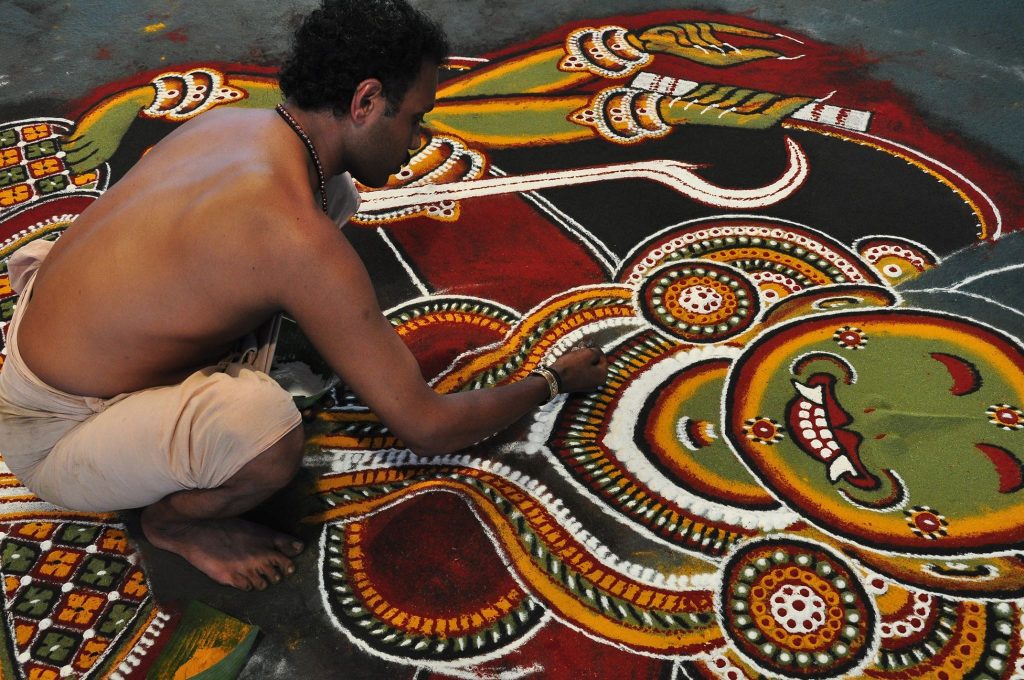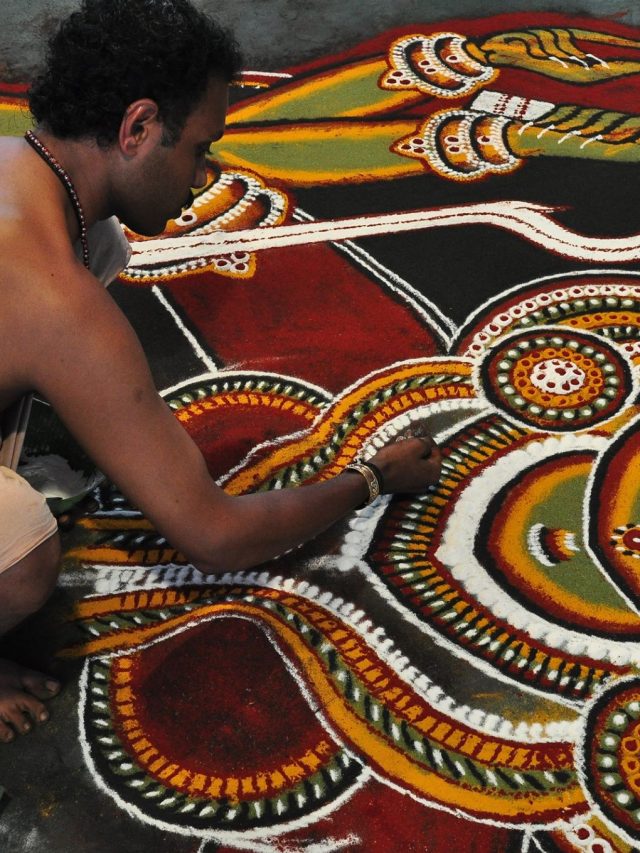Kalamezhuthu is a ritualistic art form which is often made during auspicious occasions. Kalamezhuthu is an amalgamation of two words — ‘kalam’ refers to the drawing while ‘ezhuthu’ means to draw or to write. It pays tribute to Hindu gods and goddesses. Kalamezhuthu in Malayalam is called ‘കളമെഴുത്ത്.’ Like Aipan art from Uttarakhand, a Kalamezhuthu painting is done on the floors. It is said to be inspired by the Kerala murals, due to the surplus use of bold colours and expressive and emotive faces.
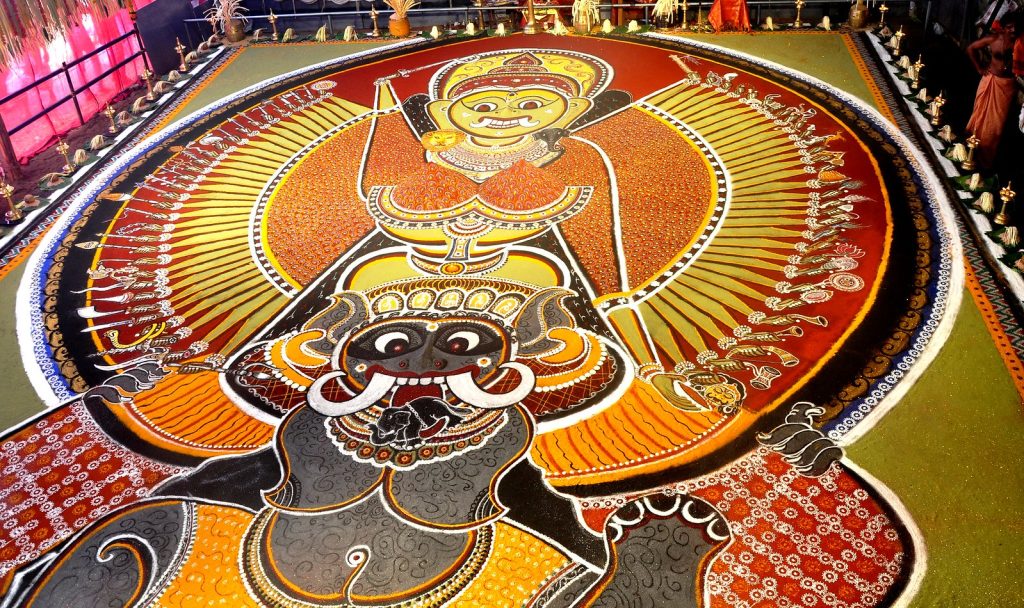
The origins of the Kalamezhuthu art form are still debated. Some believe it to have originated in the 9th century AD, practised by the Chola dynasty. Others subscribe to the discourse that it was widely practised during the Sangam period (3rd century BC to 3rd century AD). It is practised throughout Kerala. However, it has multiple regional variants. These include Kalam Pattu (north), Kalamezhuthu Pattu (south), Dhumakkali (central), and Kalam Karuppai (Tamil Nadu).
Preparing for Kalamezhuthu
The Kalamezhuthu pattu song is sung to the beats of ilathalam, chenda, Kombu, veekkanchenda, and kuzhal before the kalam is drawn. One may even see the dramatic Mudiyettu ritual during a quintessential Kalamezhuthu festival taking place on a performance stage. The stage or ‘pattu mandapam’ is decorated with palm fronds, flowers, and oil lamps. The entire village is summoned for the communal celebration.
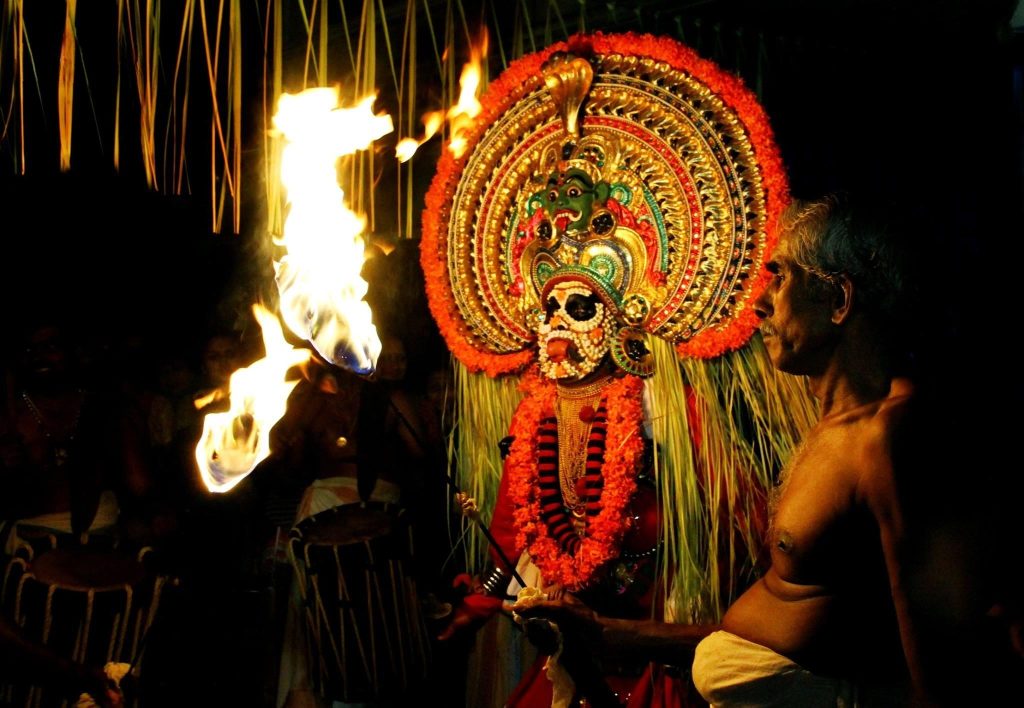
Drawing the Kalamezhuthu Art
A Kalamezhuthu painting is usually done by male members of the Ambalavasis, Kurups, Theyyampadi Nambiars, Theeyadi Nambiars and Theeyadi Unnis communities. Hence, there are many unique variants of the kalam. These paintings have an innate emotion, incorporated by the artisans who bare their souls into them. Just like the Thangka paintings, they follow a strict religious protocol. The patterns of the Kalamezhuthu painting are dictated by the occasion rather than by the artist. This affects the deities’ appearance, hairstyle, jewellery, and clothes. The drawing begins at an affixed time.

Kalamezhuthu famously accompanies the 40-day eponymous festival. Artists use natural coloured powders to draw ‘kalams’ of deities in front of the temples and houses. The artist prepares the floor with a paste of rice powder and cow dung. The first line in the Kalamezhuthu painting is made from east to west. Using charcoal or chalk, the outline is created next, which may take up to 2 to 5 hours. The eyes are drawn at the end, as the Keralites believe that drawing them enlivens the deity.
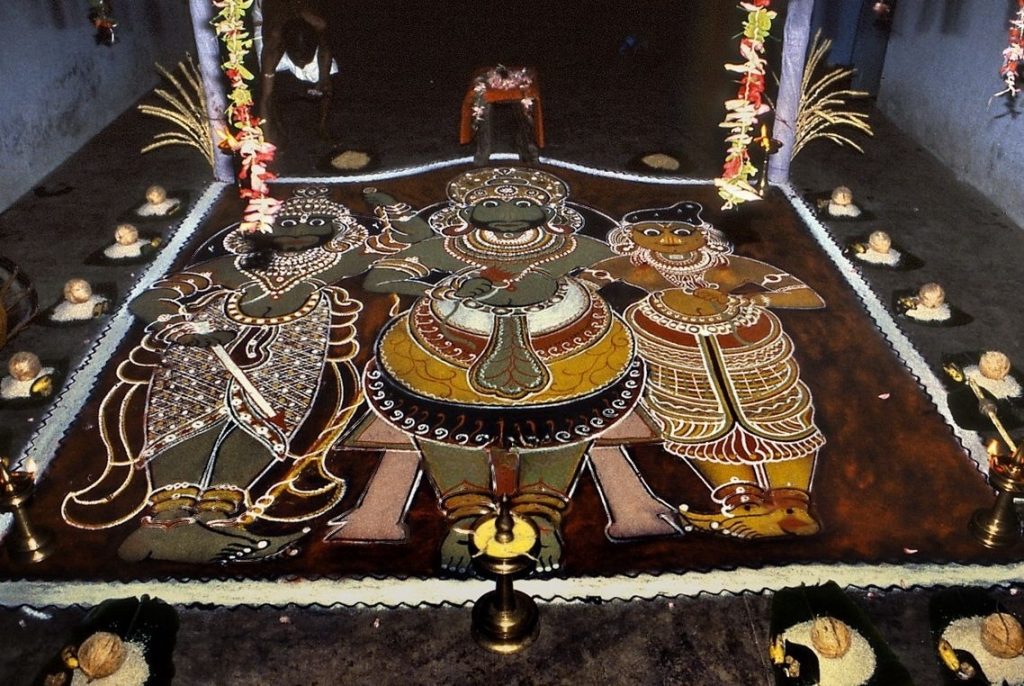
Although most of the designs are handmade, the artist may choose to use a brush fashioned out of bamboo and coconut fibre, although only rarely. The Kalamezhuthu art is usually decorated with palm leaves, red hibiscus & jasmine flowers, incense sticks, and basil leaves. At the end of the ritual, the paintings are erased. This practice signifies the transient nature of life, both of a god and a human.
Kalamezhuthu Painting Colours
Since mainly powders are used to make a kalam, it is also known as powder drawing ‘dhulee chithram,’ or ‘dholichithram.’ Kalamezhuthu paintings are mostly done with five colours or ‘panchavarnam.’ These powders are extracted from rice flour (white), lime (red), Gulmohar leaves (green), charcoal or burnt paddy husk (black), and turmeric (yellow). Each of these five colours represents the five elements of nature or ‘Panch Bhootha.’ White represents water; red denotes fire; green symbolises air; black recalls the cosmos; yellow signifies the earth.
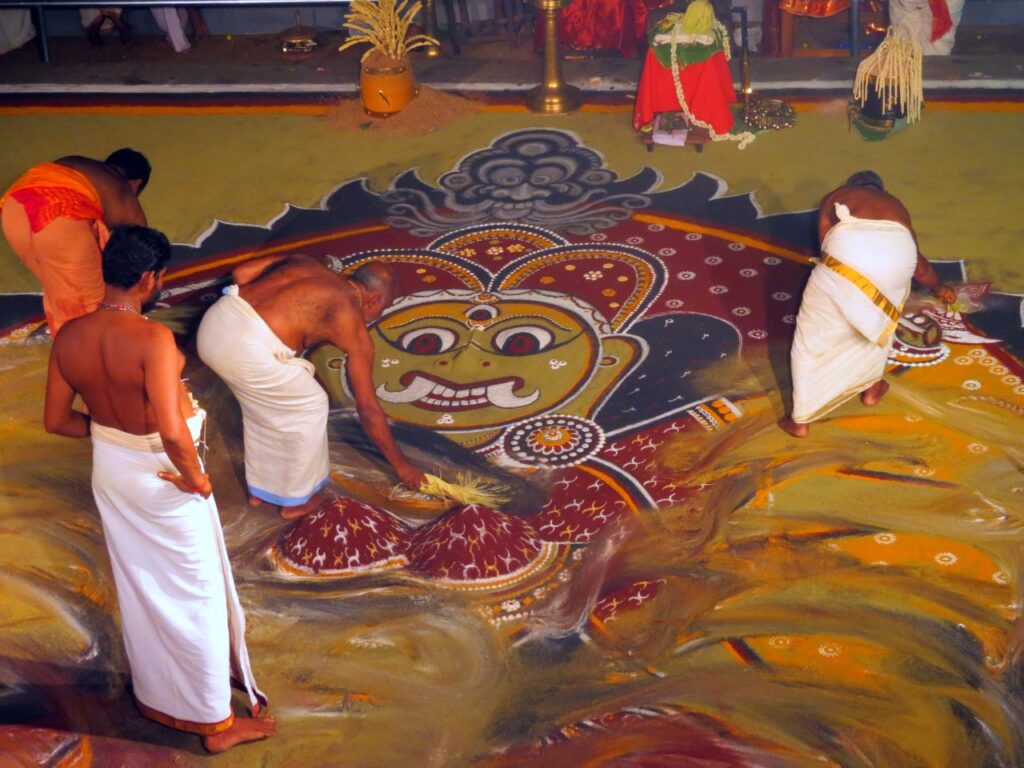
Out of these five colours in Kalamezhuthu art, three are given prominence which are said to represent the fundamental nature of the natural world. White represents purity or harmony (Sattva); red signifies distraction or externalisation (Rajas); black denotes negativity and melancholia (Tamas).
Themes of Kalamezhuthu Art
Kalamezhuthu paintings are drawn according to Vastu-Shastra and may scale between 10ft to 20 ft. On some occasions, the paintings have been bigger. These paintings describe the scenes from Hindu epics and deities, featuring the goddess Bhadrakali (Parvati’s avatar), Ayappan, Bhagvati, Vettakkorumakan, and Sarpa Kavu. These gods often brandish weapons and carry an angry expression (ugram).
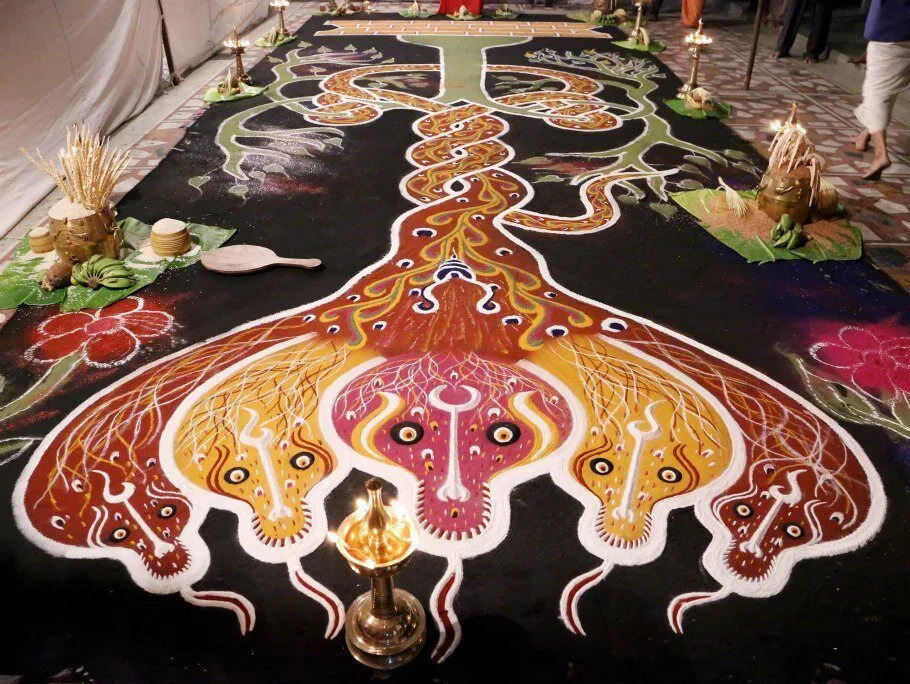
In addition, a Kalamezhuthu painting may also carry motifs of lotus flowers, mandala, yantra patterns, Swastika, and other similar religious symbols. These paintings also symbolise the gateway to the natural world through representations of birds, animals, and trees. Popular animal motifs include elephants, peacocks, snakes, horses, and bullocks which mostly serve as the gods’ vehicles.
Image Courtesy – Welcome Kerala Magazine via Facebook

Hi Ya’ll !!
I love writing about pop culture and all things queer.
Sub Editor at Abir Pothi

